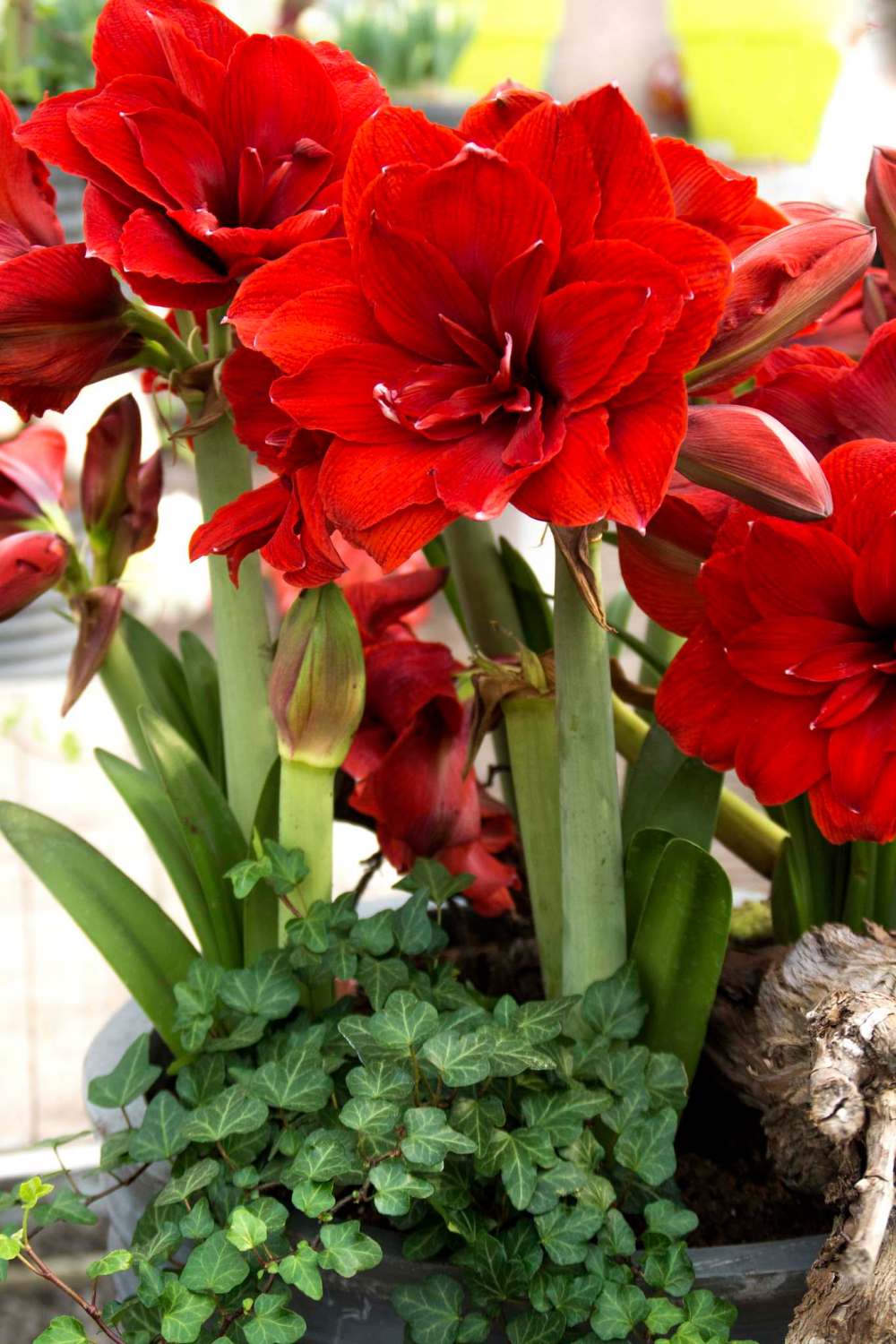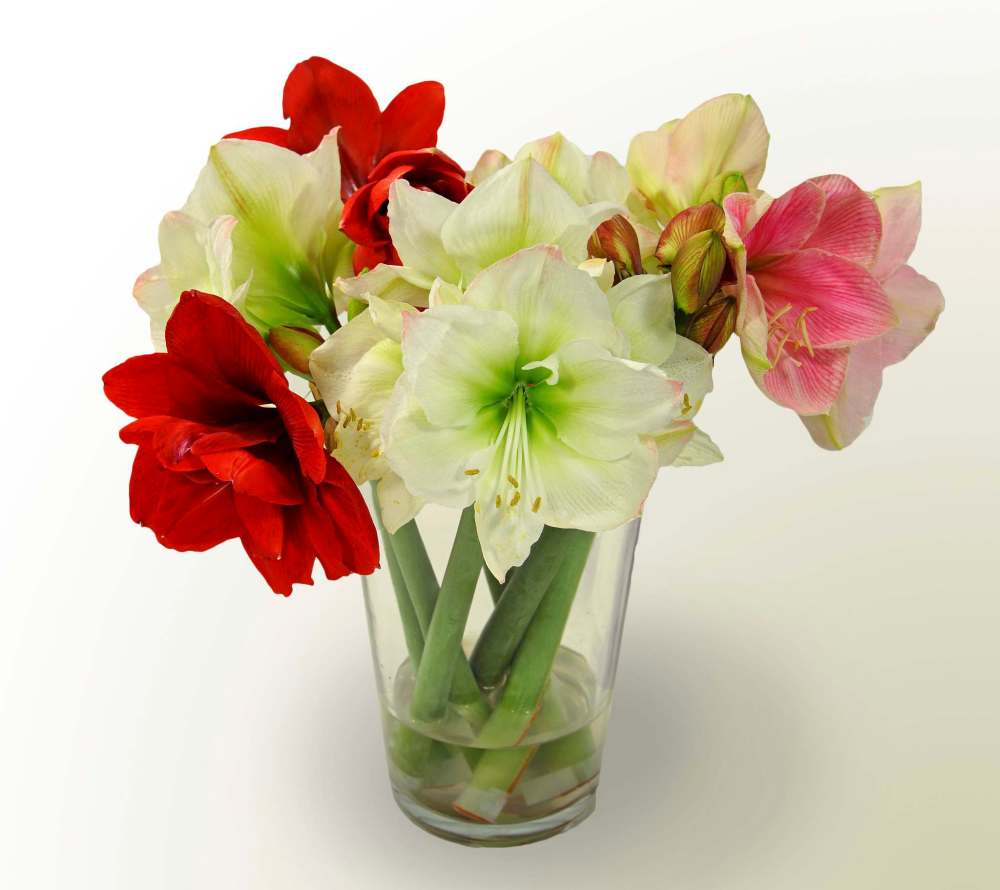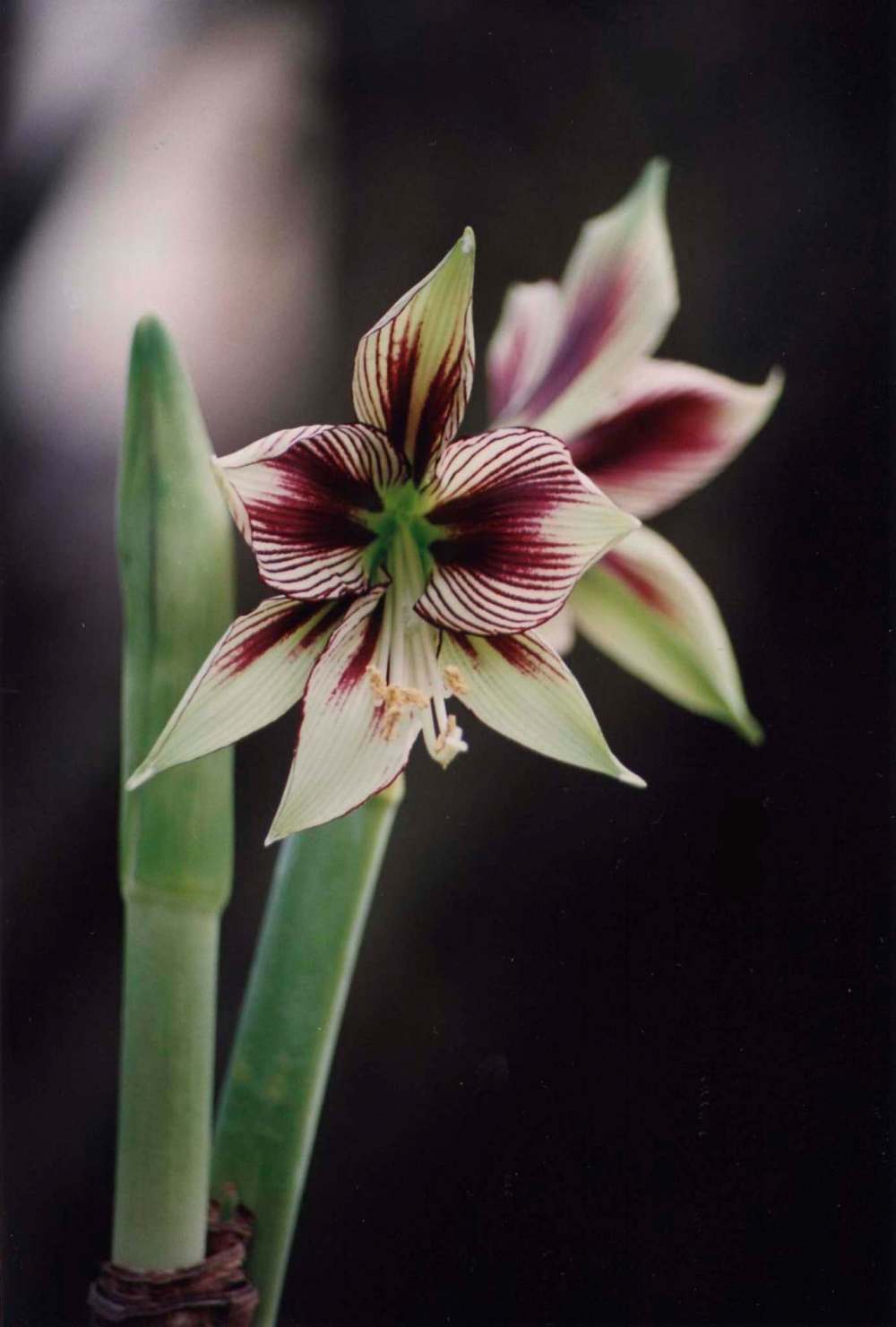It’s amaryllis season
While outdoor plants go dormant, these beautiful flowers bloom indoors just in time for Christmas
Advertisement
Read this article for free:
or
Already have an account? Log in here »
To continue reading, please subscribe:
Monthly Digital Subscription
$1 per week for 24 weeks*
- Enjoy unlimited reading on winnipegfreepress.com
- Read the E-Edition, our digital replica newspaper
- Access News Break, our award-winning app
- Play interactive puzzles
*Billed as $4.00 plus GST every four weeks. After 24 weeks, price increases to the regular rate of $19.00 plus GST every four weeks. Offer available to new and qualified returning subscribers only. Cancel any time.
Monthly Digital Subscription
$4.75/week*
- Enjoy unlimited reading on winnipegfreepress.com
- Read the E-Edition, our digital replica newspaper
- Access News Break, our award-winning app
- Play interactive puzzles
*Billed as $19 plus GST every four weeks. Cancel any time.
To continue reading, please subscribe:
Add Winnipeg Free Press access to your Brandon Sun subscription for only
$1 for the first 4 weeks*
*$1 will be added to your next bill. After your 4 weeks access is complete your rate will increase by $0.00 a X percent off the regular rate.
Read unlimited articles for free today:
or
Already have an account? Log in here »
Hey there, time traveller!
This article was published 15/10/2016 (3272 days ago), so information in it may no longer be current.
Now that Thanksgiving’s over, amaryllis bulb kits are making their way onto store shelves. Packaged in pretty, glossy boxes with magnified images of gorgeous blooms, the kits contain everything you need for forcing flower bulbs indoors in time for Christmas blooms — a plastic pot, soil and bulb.
Belonging to the Hippeastrum genus, amaryllis is a native of South America. In reality, these are not true amaryllises. Rather, that title belongs to Amaryllis belladonna, native to South Africa. While similar in appearance, it is the Hippeastrum that is ideal for forcing indoors for spectacular, trumpet-shaped winter blooms. The star-like petals, six in all, come in a range of colours. Choose from shades of red-, white-, pink- and salmon-coloured varieties with a multitude of patterns including stripes and splashes of speckles.
Charisma, for example, is a perennial favourite with a frosted appearance. Picotee has multiple white blooms and there are double-flowering varieties, too, such as burgundy-coloured Double Dragon.

There are also uniquely different varieties such as Papilio, an orchid-like variety with burgundy stripes on creamy petals, or Evergreen, which has astonishingly lime-green petals.
Inspect your bulbs for firmness, and a disease- and blemish-free appearance.
Generally, amaryllis bulbs take six to eight weeks to come into bloom after being potted up, although special Christmas blooming varieties that flower in a mere 30 to 35 days are also available from Canadian mail-order companies such as Botanus.
T&T Seeds in Headingley is carrying three types of amaryllis bulbs. The no-frills packaging consists only of the bulb. There are three unique varieties available: Mambo, whose red flower features a mostly white, star-shaped centre with a green throat; Clown, which has broad, red and white stripes; and Black Pearl, a seriously sensational variety with deep, dark burgundy blooms that are 15 to 20 centimetres wide.
Purchasing packaged bulbs rather than the more eye-catching gift kits is often a more affordable option. If it isn’t convenient to pot up your bulb immediately after purchase, store the packaged bulb in a cool location away from direct light. This helps to prevent sprouting, which has the potential to adversely affect the quality of the bloom and foliage.
Potting up your bulb is easy. The soil mix provided in the kit has been specially formulated to be lightweight with good drainage and aeration. It’s important to leave the top one-third of the bulb exposed. Tamp the soil around the bulb and moisten thoroughly. Place in a bright, warm location and wait to resume watering until active signs of growth appear, at which time a more frequent watering schedule needs to be followed.

Rotate the container regularly to promote even growth and a strongly upright stalk. Fertilize with half-strength water-soluble plant food. To ensure longevity of blooms, move your amaryllis to a cooler location away from direct sunlight and opt for cooler nighttime temperatures.
Considering the tall, elegant stem and voluptuous blooms that amaryllis ultimately produces, the plastic pot provided with your kit may seem inadequate both in size and appearance. The pot is meant to be a relatively snug fit, designed to correlate to the size of the bulb. It should also have a drainage hole. Once the bulb begins growing, the humble container can be slipped inside something more glamorous, if desired.
How about a luxurious bouquet of multiple stems of fresh cut amaryllis? Cut amaryllis blooms are long-lived in water, up to 14 days. Whether you start the required number of amaryllis bulbs for this purpose or pre-order a cut-flower bouquet, Tatiana Penner, owner of Oak & Lily on Corydon, recommends changing the vase water daily in order to maintain a long vase life. This, Penner says, helps to prolong the life of your cut flowers by keeping bacteria at bay.
Some experts recommend filling the hollow stem with water and plugging the base with a cotton ball, but Penner says another option is to insert a support such as a straw into the hollow stem of the cut flower to help keep the heavy blooms upright.
If the tall stem on your potted amaryllis (which generally grows to a dramatic height of 40 to 60 cm) would benefit from support, bamboo stakes (the type used with orchids) are available at most florist shops or garden centres.

Local florists such as Oak & Lily will have amaryllis kits on hand, but also ready-to-go potted amaryllis arrangements dressed for the season with natural or artificial stems, berries, moss, a pinecone or two. You can dress up your amaryllis as well by tucking the pot into a larger container and combining it with an assortment of small (5 or 10 cm) potted tropicals. Peperomia — with its leaf arrangement that is reminiscent of a bow shape — or pilea — an easy-to-grow houseplant — make nice, trouble-free fillers. Ivies, of course, are attractive additions, too.
Selaginella with its mossy green colour and delicate fronds, provides a pretty skirt at the base of the amaryllis stem. Use it to cover the soil, mounding it slightly, and generously tuck more of the selaginella (also known as clubmoss or Irish moss) in and around other pots in your display. Snip a couple of fresh branches from the outdoors, add a stem of artificial berries and perhaps a bow for a pleasing display.
It’s possible as well to grow amaryllis in glass containers, hurricane-style vases or a low-profile dish with nothing more than water and a layer of pebbles or glass beads in the bottom. Sharlene Nielsen, owner of Front Door Stories, creates these types of arrangements successfully. It is important, she says, to ensure that the bulb sits on the surface of the stones and that the water level does not touch the base of the bulb. A clear container will allow you to see the water levels which should be at least three centimetres below the base of the bulb. It will be necessary to check the water levels daily and rotate the display often to prevent stems from stretching toward the light.
Bulbs grown in this type of arrangement should be discarded after they are finished blooming. However, amaryllis bulbs grown in potting medium have a longer life and, with proper care, will bloom again in future years. Once your bulb has finished flowering, remove the spent blooms and fertilize once more to allow the bulb to replenish its food supply. Move your plant to a sunny room and continue a regular watering schedule.
You can reduce the length of stems somewhat after flowering, however not all experts agree it’s necessary to cut stalks off at the base. Water when soil is dry to the touch and continue to fertilize. In spring, set your amaryllis outdoors once all risk of frost has passed, acclimatizing it gradually to a bright location that is mostly part shade. Do not allow the bulb to dry out.
By late summer, commence a dormant period. Remove the yellowing leaves, cease watering and fertilizing, and store in a cool, dark area for about eight to ten weeks. Your bulb will have come full circle, ready to be persuaded to flower once again.

colleenizacharias@gmail.com

Colleen Zacharias
Gardening columnist
Colleen Zacharias writes about many aspects of gardening including trends, plant recommendations, and how-to information that is uniquely relevant to Prairie gardeners. She has written a column for the Free Press since 2010 and pens the monthly newsletter Winnipeg Gardener. Read more about Colleen.
Every piece of reporting Colleen produces is reviewed by an editing team before it is posted online or published in print — part of the Free Press‘s tradition, since 1872, of producing reliable independent journalism. Read more about Free Press’s history and mandate, and learn how our newsroom operates.
Our newsroom depends on a growing audience of readers to power our journalism. If you are not a paid reader, please consider becoming a subscriber.
Our newsroom depends on its audience of readers to power our journalism. Thank you for your support.

